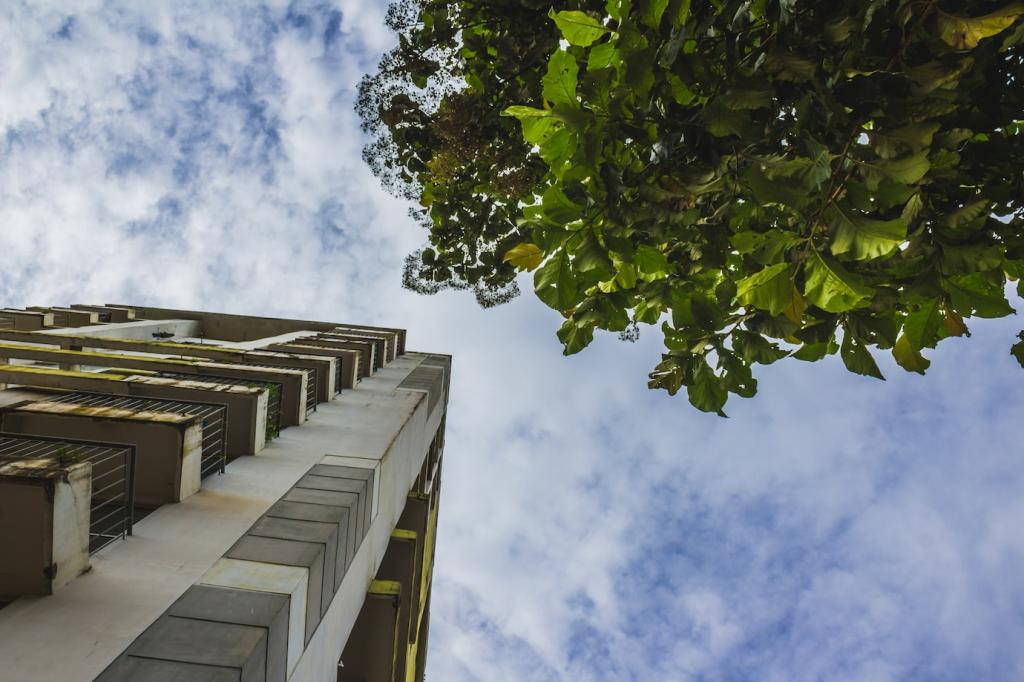Sustainable Flooring Materials for Your Home
Choosing sustainable flooring is an essential step towards making your home healthier for both your family and the environment. Eco-friendly flooring options help reduce your carbon footprint while providing beauty, durability, and comfort underfoot. By opting for earth-conscious materials, homeowners can ensure their living spaces are elegant, resilient, and responsibly sourced. Dive into the world of sustainable flooring to discover how you can make smarter choices for your next renovation or new home build.

Bamboo Flooring
Bamboo flooring stands out as a resilient and rapidly renewable alternative to traditional hardwood. Unlike slow-growing timber, bamboo is a grass that can mature in as little as three to five years, making it much more sustainable to harvest. It offers a sleek, modern look and excellent durability, making it suitable for high-traffic areas. Properly manufactured bamboo floors are strong and moisture-resistant, giving homeowners a long-lasting, attractive finish. Additionally, because bamboo regenerates quickly without the need for replanting, its environmental impact is minimal compared to typical hardwood species.

Cork Flooring
Cork flooring combines unique texture, comfort, and noise reduction properties, all while being extremely eco-friendly. Cork is harvested from the bark of cork oak trees without harming the tree, allowing the bark to regrow and be harvested every nine to twelve years. Its natural cellular structure provides a cushiony feel underfoot and acts as a thermal and acoustic insulator, making it ideal for bedrooms, kitchens, and family rooms. Cork is also naturally resistant to mold, mildew, and pests, which makes it a healthy option for allergy-prone households seeking sustainability and comfort.

Engineered Wood from Reclaimed Sources
Engineered wood flooring made from reclaimed lumber gives a second life to materials that might otherwise end up in landfills. These floors maintain the classic charm of wood but utilize timber sourced from old buildings, barns, or industrial sites. By repurposing existing wood, the demand for new logging is reduced, conserving forests and reducing waste. Engineered wood’s composition makes it more stable than solid wood, suitable for areas with fluctuating humidity or temperature. Homeowners can enjoy the nostalgia and storytelling embedded in reclaimed wood while supporting sustainable practices.
Recycled rubber flooring, often sourced from used tires, provides exceptional durability and resilience. It works well in home gyms, playrooms, and utility spaces, where shock absorption and slip resistance are priorities. Using discarded tires not only diverts waste from landfills but also reduces the energy and resources involved in producing new materials. The finished product is easy to maintain, water-resistant, and available in a variety of colors and patterns. Homeowners benefit from a functional, modern flooring solution while supporting a circular economy that values resource conservation.
Recycled and Repurposed Materials
Renewable and Low-Impact Flooring Options
Linoleum Made from Natural Ingredients
Linoleum, often confused with vinyl, is crafted from renewable materials like linseed oil, cork dust, wood flour, and jute. Its natural composition makes it biodegradable at the end of its life cycle, unlike plastic-based alternatives. Linoleum is durable, easy to clean, and resistant to water and stains, making it well-suited to kitchens, bathrooms, and hallways. Available in a wide range of colors and patterns, it allows homeowners to add personal style without compromising on environmental values. Selecting linoleum supports manufacturing processes that rely less on petrochemicals and more on sustainable resources.
Sisal and Seagrass Flooring
Sisal and seagrass are two natural fibers rapidly gaining popularity for their renewability and biodegradability. Sisal comes from the agave plant, while seagrass is harvested from wetlands—both are fast-growing and require minimal pesticides or fertilizers. These materials are woven into strong, attractive mats or carpets that offer earthy textures and durability. Particularly well-suited for living rooms and casual spaces, sisal and seagrass flooring bring a touch of nature indoors. Their allergen resistance and minimal off-gassing make them safe, low-impact options for the whole family.
Wool Carpet from Ethical Sources
Wool carpeting made from ethically raised sheep is a luxurious, natural flooring option that also emphasizes renewability. Unlike synthetic fibers, wool is biodegradable, naturally stain-resistant, and provides incredible warmth and comfort underfoot. When sourced from farms that prioritize animal welfare and sustainable grazing, wool carpet is a responsible choice. It also helps regulate humidity, acting as a natural air filter in the home. Homeowners can enjoy the softness and insulating properties of wool carpets while supporting agricultural practices that are gentle on the environment.
